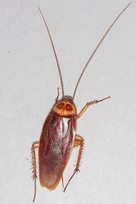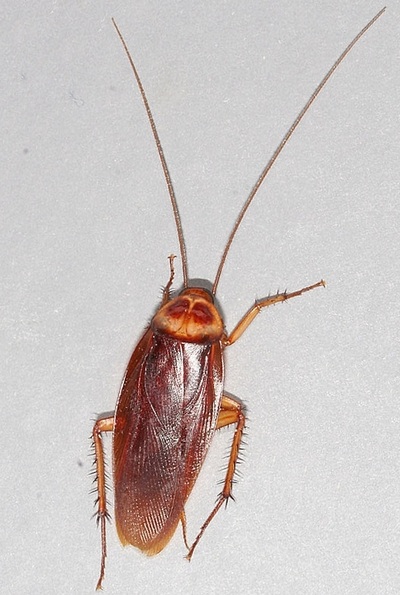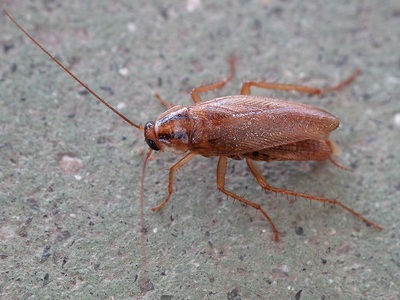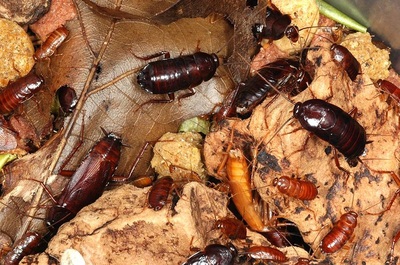
Many people have experienced the disgusting sight of dozens of little shapes scurrying
for cover after a light was switched on at night. No other sight has quite the same power
to strike fear into the hearts of homemakers everywhere. It almost seems unfair that such
a vile species of insect as the cockroach is also one of the hardest to get rid of. Those
insects with the vaguely racist names and the repulsive hygiene have caused many a headache
for homeowners and pest control technicians alike.
Cockroaches, especially the German cockroach (Blattella germanica), are also known vectors for disease. They have been known to spread 33 kinds of bacteria, including E. coli and Salmonella, as well as other pathogens and parasitic worms. Their tendency to leave body parts and feces all over the place is also bad news for asthma sufferers -- certain proteins found in cockroach saliva can cause severe allergic reactions, especially among children. This is one type of pest that needs to be eradicated immediately upon detection by a trained pest control technician.
WHAT YOU CAN DO
Most everything that can be done by a homeowner is preventative. Sanitation is the best defense. Make sure that dishes are washed and put away, countertops are clean, and no food residue is left in the kitchen. Make sure all cracks and holes are sealed with caulk or sealing foam. If signs of a roach infestation are found, however, it's generally best to contact a professional instead of trying to get rid of the infestation yourself.
OUR TREATMENT
Residual gel bait seems to work the best for roaches, especially the German cockroach (Blattella germanica). Small strips of bait, about the consistency of toothpaste, are placed in out-of-the-way areas. Sometimes, multiple treatments are necessary. Roaches are also treated using general sprays as well as growth regulators, which inhibit reproduction.
Cockroaches, especially the German cockroach (Blattella germanica), are also known vectors for disease. They have been known to spread 33 kinds of bacteria, including E. coli and Salmonella, as well as other pathogens and parasitic worms. Their tendency to leave body parts and feces all over the place is also bad news for asthma sufferers -- certain proteins found in cockroach saliva can cause severe allergic reactions, especially among children. This is one type of pest that needs to be eradicated immediately upon detection by a trained pest control technician.
WHAT YOU CAN DO
Most everything that can be done by a homeowner is preventative. Sanitation is the best defense. Make sure that dishes are washed and put away, countertops are clean, and no food residue is left in the kitchen. Make sure all cracks and holes are sealed with caulk or sealing foam. If signs of a roach infestation are found, however, it's generally best to contact a professional instead of trying to get rid of the infestation yourself.
OUR TREATMENT
Residual gel bait seems to work the best for roaches, especially the German cockroach (Blattella germanica). Small strips of bait, about the consistency of toothpaste, are placed in out-of-the-way areas. Sometimes, multiple treatments are necessary. Roaches are also treated using general sprays as well as growth regulators, which inhibit reproduction.
Unless otherwise indicated, all photos are courtesy Wikimedia Commons or the US Centers for Disease Control and Prevention.



